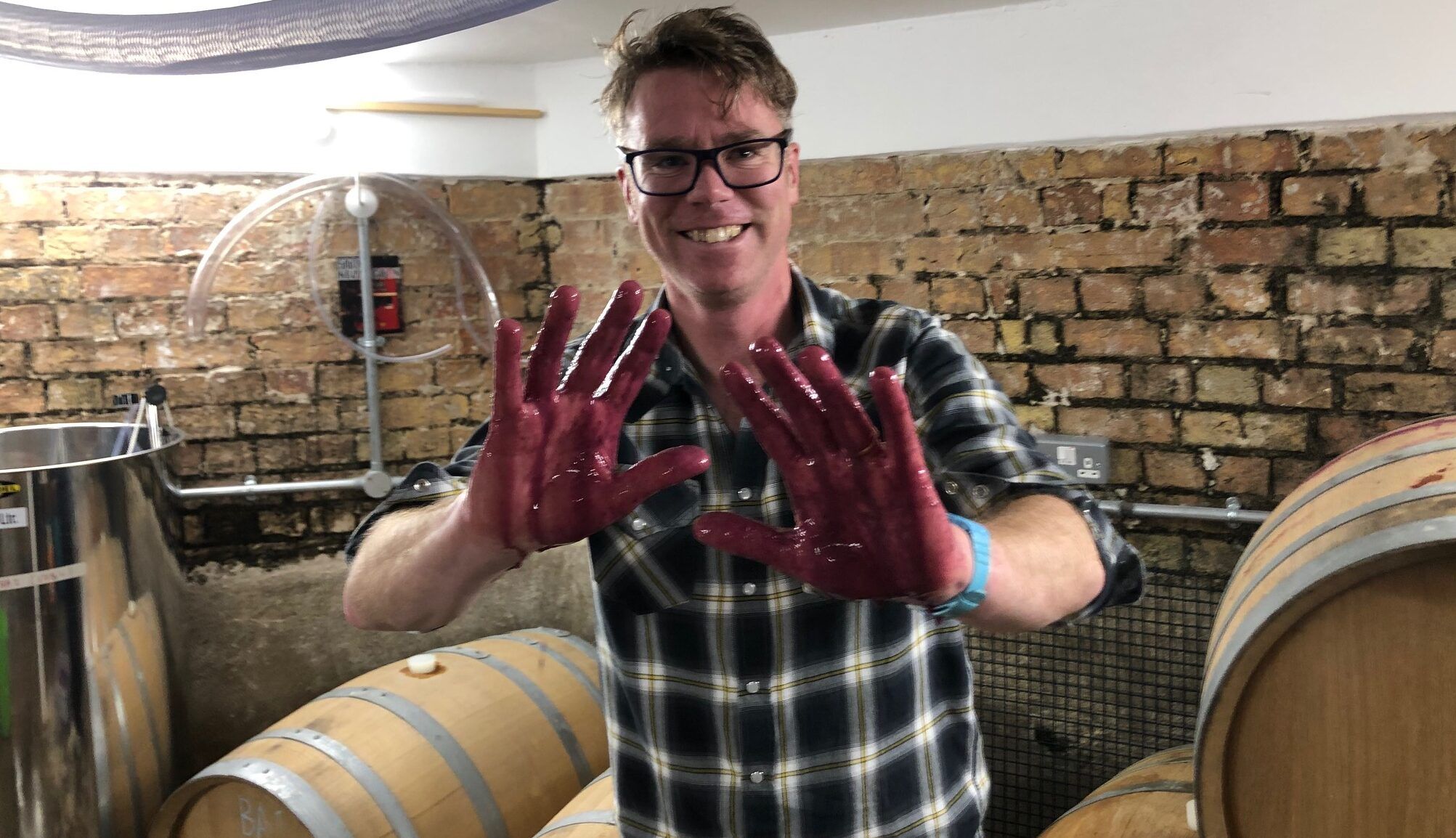“After a few emails back and forth a plan was hatched to make a hand-stemmed, foot-stomped, skin-contact field blend rosé from the seven red and white varieties in the vineyard… what could possibly go wrong?”
The geeks shall inherit the earth… not if I have anything to do with it. I read a quote recently from a winemaker who said that he didn’t test his wines because – and I paraphrase because I can’t recall the exact wording – if you have to test, it means that you don’t know.
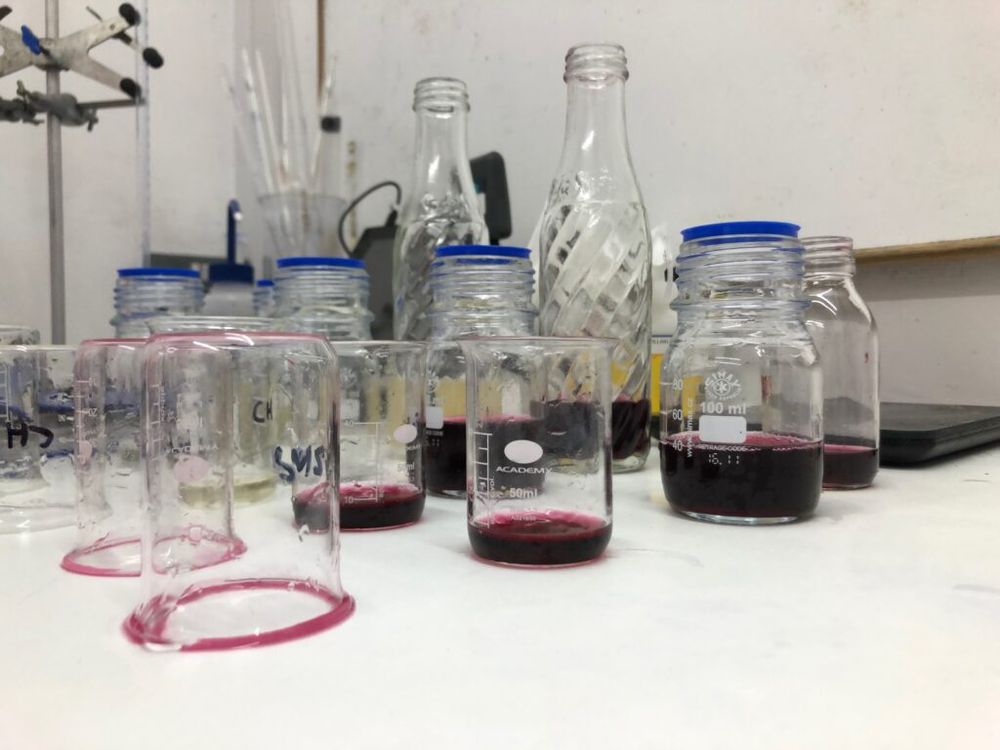
I liked what he was getting at and, while I appreciate the obvious flaws in the argument, there’s something to be said for being a little ‘hands off’ in the winery when it comes to the numbers and trusting your senses and your gut instead. There are plenty of winemaking geeks around and I can tell you that, after three months in the Gutter & Stars winery, I am not joining their ranks.
Much of this comes from my situation at the winery. There’s not much space to dedicate to setting up a proper lab (and space will be in even shorter supply when I have bottled wine to store and retail space to think about) but moreover there’s no room in my budget for the kit required. Add to this a lack of appetite to don the white laboratory coat (which is, in fact, a cricket umpire’s jacket) all that often, and it’s clear that I’m not cut out to be a lab rat. I’d rather be an umpire to be honest.
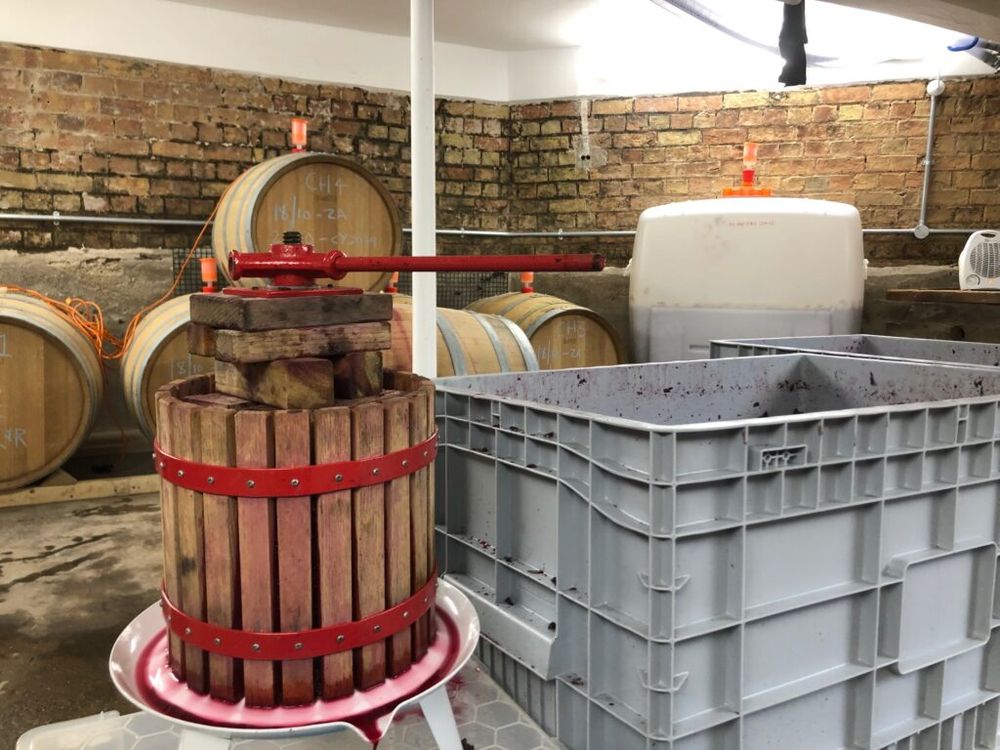
The new arrival of the basket press is also slowly making Gutter & Stars winery seem smaller
So what do I look at to ensure that the musts and wines are heading in the right direction and to decide if and when to intervene with a dose of yeast hulls or PMS? As I mentioned in a previous column I have a basic set-up of equipment loaned to me by local chemical and lab suppliers Camlab which enables me to carry out the three most important bits of analysis; pH, TA and SO2.
Along with a hydrometer and thermometer to chart the declining sugars as fermentation ticks merrily along there are few other essential tools I need. These simple but solid numbers, twinned with regular organoleptic assessment of the wines allow me to make the key decisions.
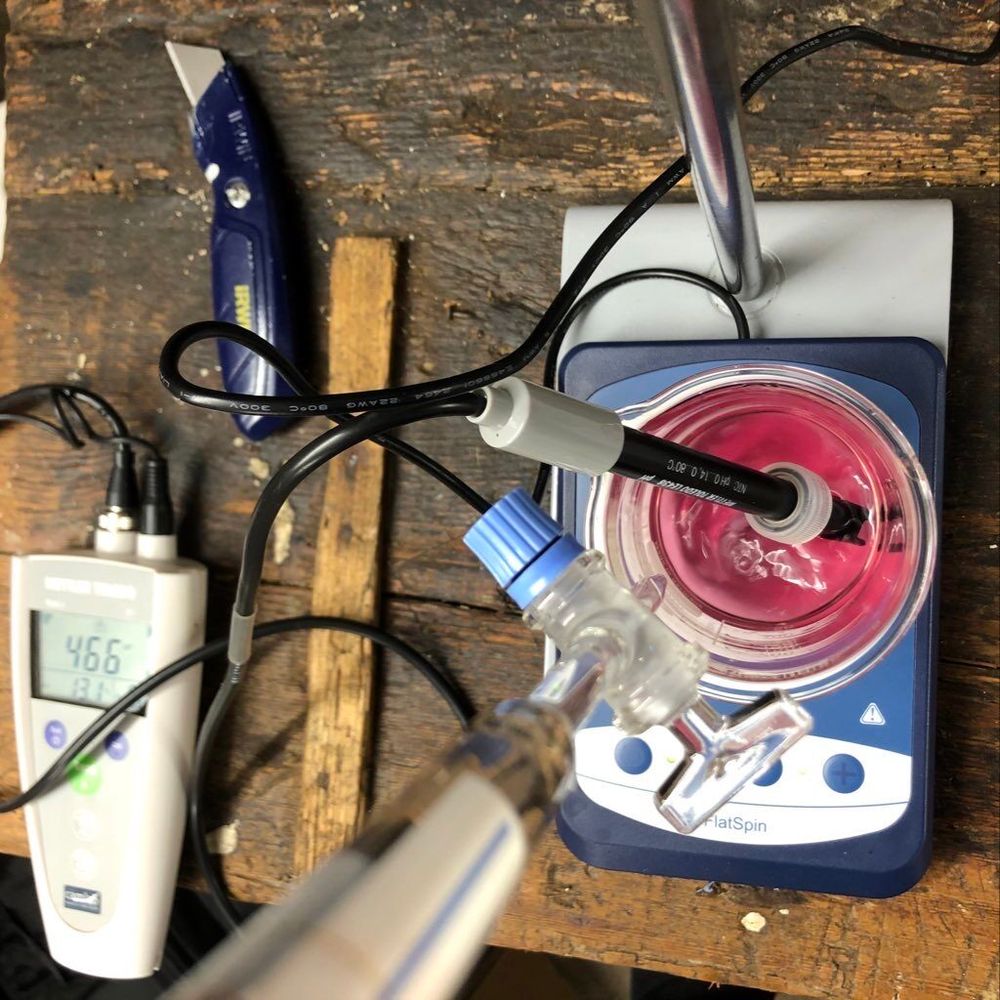
One important test that I needed to outsource recently, however, was to check whether the Pinot Noir and Chardonnay wines had successfully completed MLF (malolactic fermentation). A quick burn up the A14 to Flint Vineyard in Norfolk where my mate Ben Witchell is the winemaker helped complete the picture. Ben whizzed my samples through his benchtop clinical chemistry analyser and within seconds it spat out the results I was hoping for – both wines had sailed through.
All four of the 2020 wines have now completed primary fermentation (with the aforementioned two going through malo as well) and are stable in barrel and tank ready to relax a little over the winter after the vigours of pressing, fermentation and racking.
The Bacchus is looking and tasting good with a floral lift, good texture in the mouth and punchy acidity. It’s made from some of the ripest Bacchus the UK has seen and is slowly revealing itself as it matures. The original plan for the Pinot Noir was to make a rosé but when it came in very ripe and with TA and pH readings of 7.05 and 3.37 it was destined to become a still red, and I’m thrilled with the results so far. It’s transforming into a juicy, fruit-forward wine with an acidic tension which will only improve as it matures in oak over the next 9-12 months.
It’s early days for the Chardonnay as it only finished fermenting this week and still has a lactic acid lilt that jumps out of the glass above all else – this makes it a little tricky to assess right now. I have high hopes for this too though as the fruit was clean, very ripe and surprisingly aromatic (thanks to the FR155 clone) – it now needs time in barrel to settle down and mature.
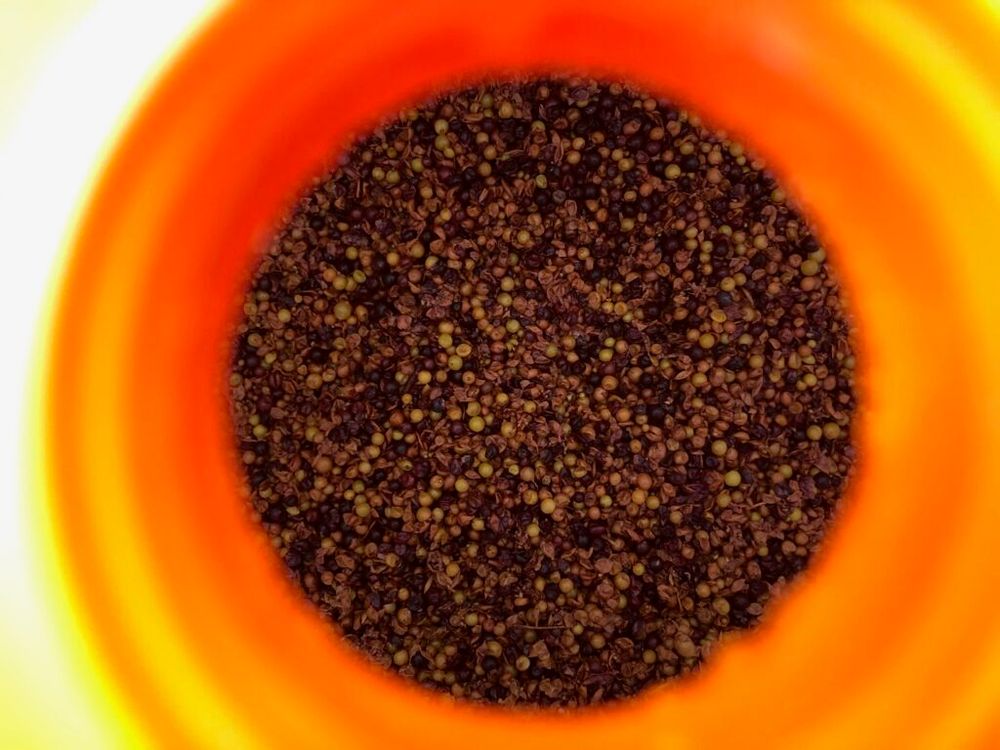
Field bend rosé – what could possibly go wrong?
The final wine of the 2020 vintage come out of nowhere at the eleventh hour. In mid-October I was contacted by Sam Howard of Norwich-based independent wine merchant Harper Wells who’d been offered the fruit from a small vineyard in Diss and wanted to know if we could do something together with it. After a few emails back and forth a plan was hatched to make a hand-stemmed, foot-stomped, skin-contact field blend rosé from the seven red and white varieties in the vineyard… what could possibly go wrong?
The result is 120 litres of strawberry-scented, keenly acidic, dark pink wine that’s currently chilling out in a stainless steel tank. We hope it knits together nicely over the winter and spring and is ready to blossom in time for the (hot and COVID-free) summer.
There’s also a beer side-project on the go with local ‘sour and wild’ brewery Pastore who have taken the Pinot Noir skins to do something magical with. More on this in the next round-up, when I might have got somewhere with the wine names and labels too and have that to share. Until then… cheers!

The Pinot lees after the post ferment rack.
